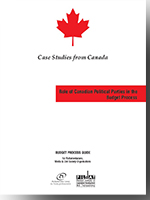Canada is a constitutional monarchy, a federation and a democracy. Responsibility for governing is shared at the federal level by the executive, legislative and judicial branches.
The Executive Branch comprises the Prime Minister, Cabinet and the Public Service. The Prime Minister is the leader of the party that elected the most members in the House of Commons. The Executive is primarily responsible for developing the budget and for proposing legislation for the raising and allocation of public funds.
The Legislative Branch consists of the House of Commons and the Senate. Members of the House of Commons are elected while Senators are appointed by the government. Constitutionally, the House of Commons has pre-eminence in budgetary matters. The Legislative Branch exercises oversight of the budgetary process through parliamentary committees.
The Judicial Branch is independent of the executive and, in the budget process, adjudicates cases dealing with financial laws.







